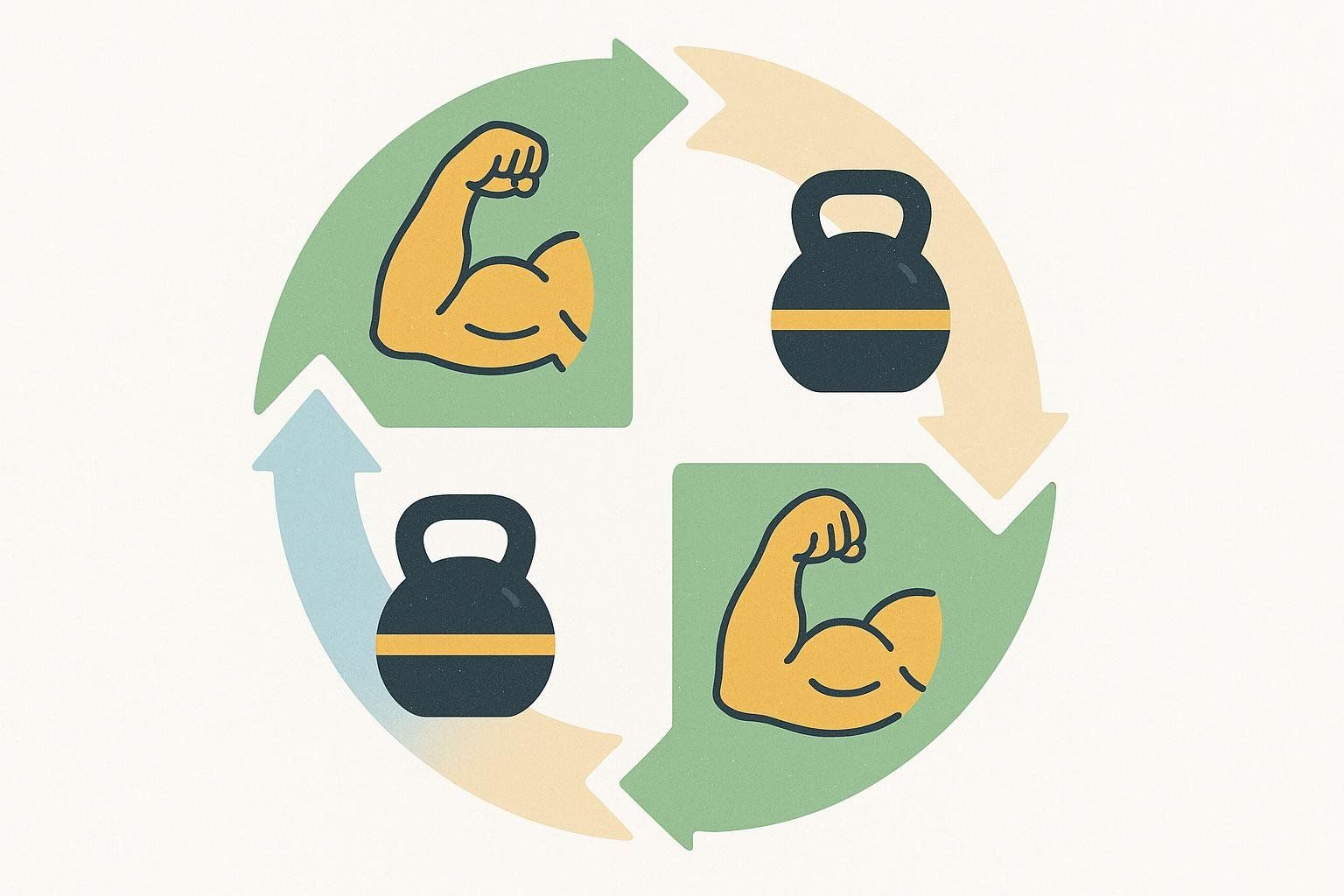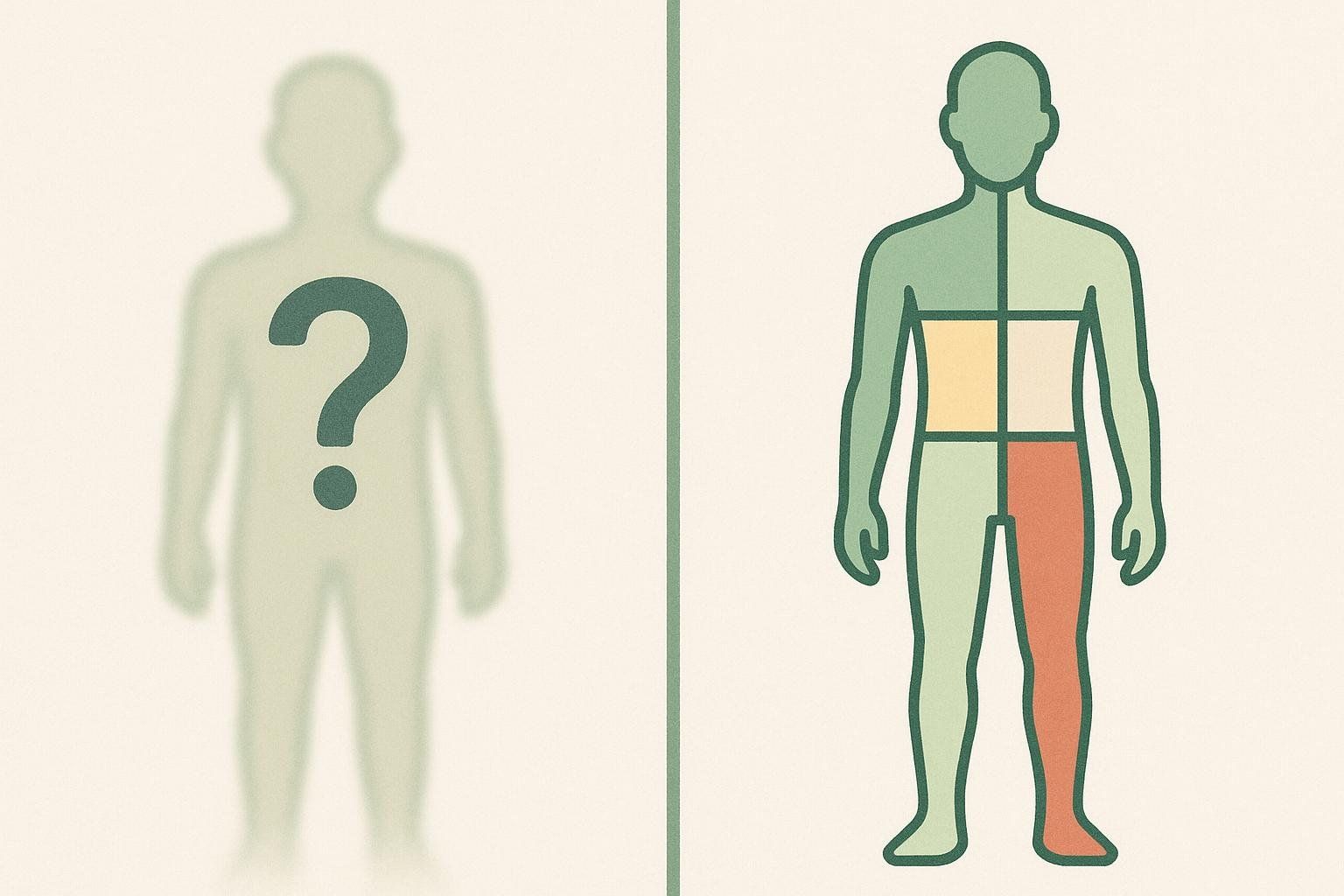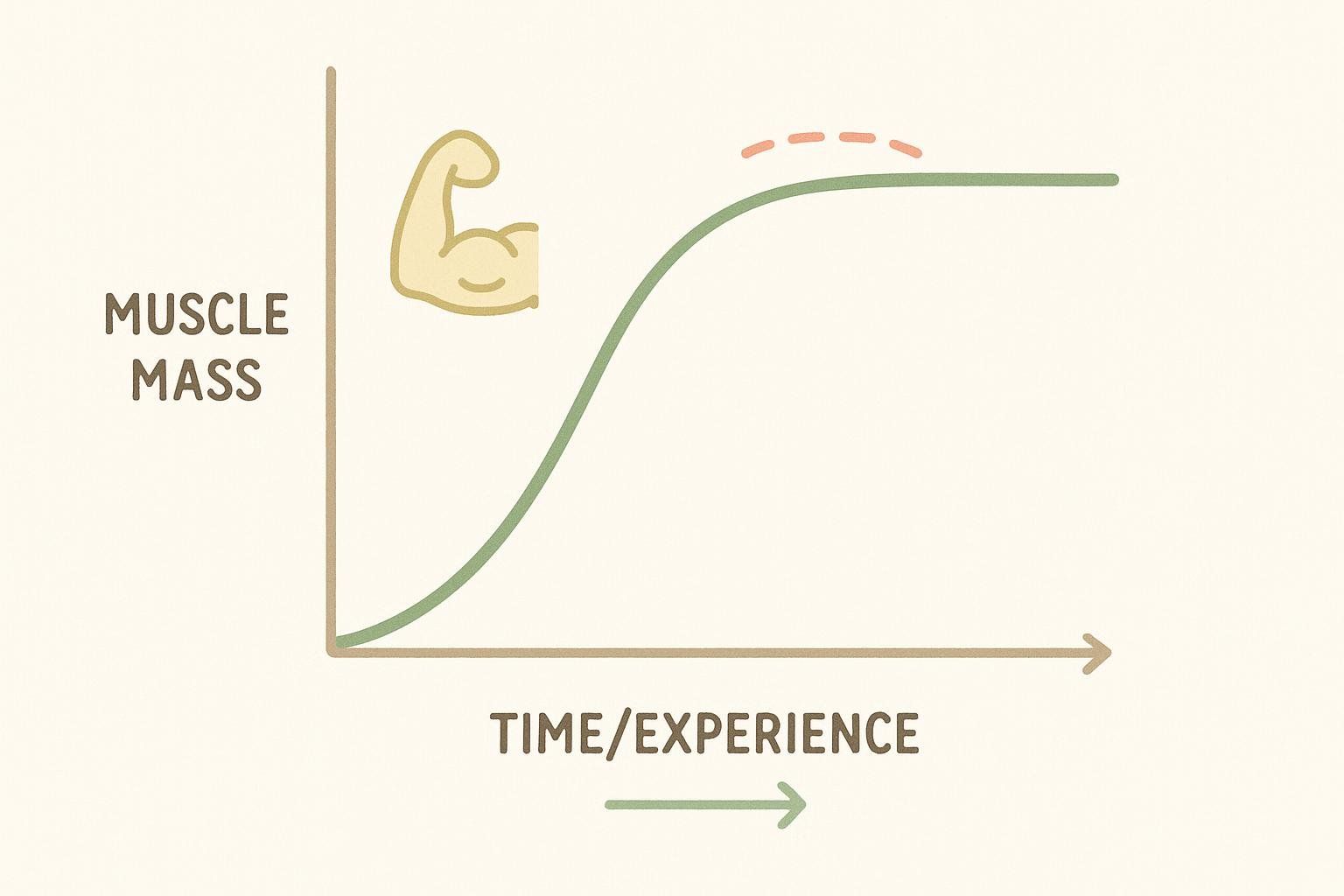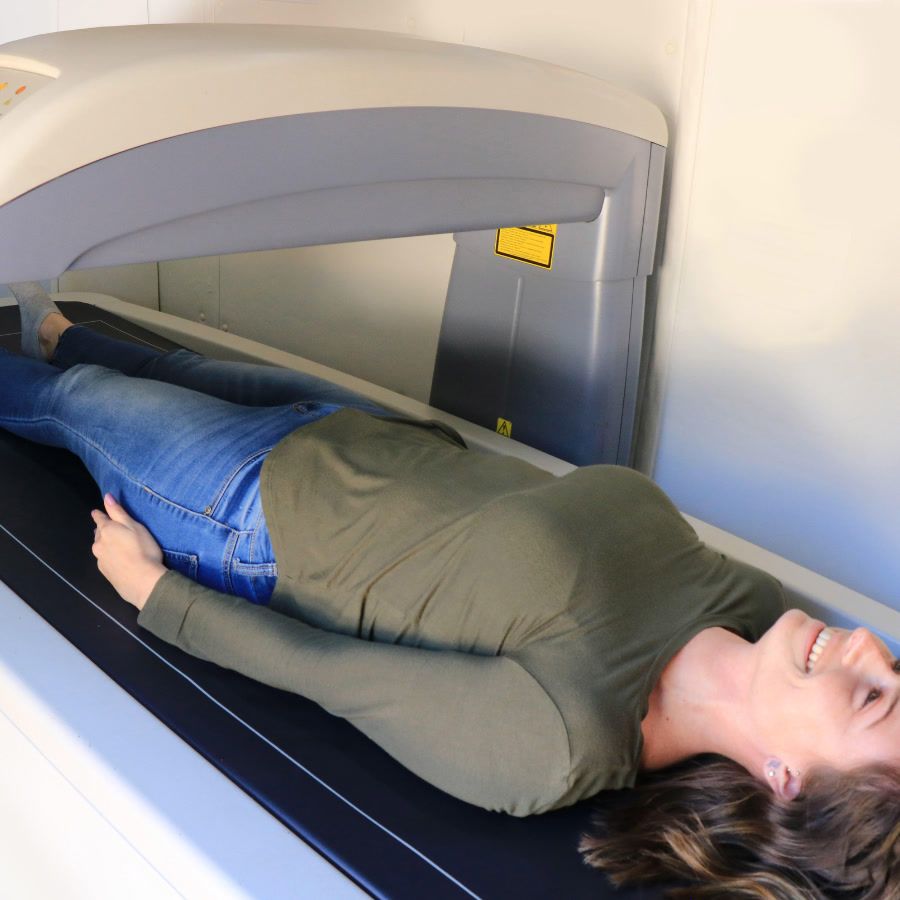How Much Muscle Mass Can You Gain? Benchmarks and Insights

How Much Muscle Mass Can You Gain? Realistic Benchmarks — and the True Ceiling
Scroll through social media and you’ll see wild promises of lightning-fast gains. In reality, muscle growth is slower—but still transformative when you commit to the long game.
Whether you’re a first-year college lifter chasing “newbie gains” or a seasoned gym-goer striving for that extra inch on your arms, understanding how much muscle you can realistically add keeps expectations (and programming) on point. Below, we break down benchmark rates, reveal BodySpec’s own 99th-percentile data on maximum potential, and explain why precise DEXA scans provide a more reliable progress check than a bathroom scale.
At-a-Glance Muscle-Gain Benchmarks
| Training Level | Monthly Gain Range* | Typical Yearly Gain (First Year at This Level) | Typical Yearly Gain (Subsequent Years) |
|---|---|---|---|
| Beginner (0–12 mos lifting) | 1–2 lbs (0.5–1 kg) | 15–25 lbs (7–11 kg) | — |
| Intermediate (1–3 yrs lifting) | 0.5–1 lb (0.25–0.5 kg) | 6–12 lbs (3–5 kg) | 3–6 lbs |
| Advanced (3+ yrs lifting) | 0.25–0.5 lb (0.1–0.25 kg) | 2–4 lbs (1–2 kg) | ~1–3 lbs |
*These benchmarks are synthesized from longitudinal research and practical models reported by sources such as Precision Nutrition and Healthline. Assumes consistent resistance training, a slight calorie surplus, adequate protein, and natural (non-enhanced) lifters.
1. The Four Factors That Dictate Your Rate of Muscle Gain
- Training Age – New stimuli trigger rapid cellular and neural adaptations. Over time, the diminishing-returns curve kicks in, and each extra pound demands exponentially more effort.
- Genetics – Fiber-type ratios, limb length, and myostatin expression influence your rate of growth but also your ceiling (we’ll quantify that ceiling with real-world BodySpec data below).
- Sex & Hormones – Higher baseline testosterone gives men a speed advantage, but women often recover faster and tolerate more volume—so both sexes can close the gap with smart programming.
- Chronological Age – Muscle strength and protein-synthesis capacity decline gradually after age 30, but resistance training can slow—or even reverse—age-related muscle loss (sarcopenia).
Think of muscle gain like filling a sponge. When the sponge is dry (beginner), every drop soaks in. As it saturates (intermediate), you need a steadier stream. Once saturated (advanced), squeezing in a few extra drops is tough.
2. What’s the Absolute Ceiling? BodySpec 99th-Percentile Data
We crunched anonymized results from tens of thousands of DEXA scans performed at BodySpec locations nationwide. Looking only at natural lifters who had at least two scans 18–24 months apart, we calculated the largest lean-mass increases relative to starting lean mass.
| Sex | 99th-Percentile Lean-Mass Gain | What That Means in Real Pounds* |
|---|---|---|
| Men | 17–18 % of starting lean mass | A 180-lb man at 15 % body fat has about 153 lbs of lean mass. 18 % of that = 27 lbs of new muscle |
| Women | 14–15 % of starting lean mass | A 150-lb woman at 25 % body fat has about 112 lbs of lean mass. 15 % of that = 17 lbs of new muscle |
*Examples assume body-fat percentage stays roughly constant during the gain phase.
Key takeaways:
- These are 99th-percentile numbers. Only 1 in 100 clients approached this ceiling within two years of disciplined training and nutrition.
- Most people will land closer to 8–12 % (men) and 6–9 % (women) over the same time span.
- The bigger your starting physique, the more absolute pounds each percentage point represents.
Why Percent Gain Matters More Than Pounds
Using percentages sidesteps individual differences in height and bone structure. Adding 20 lbs of muscle to a 6’4” frame might barely move the aesthetic needle, while the same 20 lbs on a 5’6” lifter is dramatic. Tracking % change in lean mass gives an apples-to-apples benchmark.
3. Beginner Gains: Maximizing Initial Muscle Growth
Studies on untrained subjects show newbies adding 4–7 lbs of lean mass in their first three months of structured lifting (Verywell Health). That translates to roughly 1–2 lbs per month—provided you:

- Lift 3–4 × per week, prioritizing compound movements (squats, deadlifts, presses).
- Hit 0.7–1 g of protein per pound (≈ 1.5–2.2 g/kg) of body weight daily (see our Protein Primer).
- Maintain a 10–20 % calorie surplus.
- Sleep 7–9 hours (growth hormone loves shut-eye).
Quick-Start Checklist for Beginners
- ✅ Full-body routine or upper/lower split
- ✅ Progressive overload: +1 rep or +2–5 lbs each session
- ✅ Track body-composition changes with a DEXA scan every 6–8 weeks
For a deeper dive, check out The Complete Guide to Newbie Gains.
4. Intermediate Trainees: Slowing, Not Stalling
By year two, the easy wins taper. Expect 0.5–1 lb of muscle per month under ideal conditions. Plateaus creep in due to neural adaptations catching up and total recoverable volume shrinking. Here’s how to keep climbing:

- Periodize Your Training – Rotate hypertrophy (8–12 reps) and strength (3–6 reps) blocks every 6–8 weeks.
- Dial-In Recovery – Active rest matters; see The Importance of Rest Days.
- Micro-Surpluses – A 200–300-calorie daily surplus minimizes fat gain while still nudging the scale north.
5. Advanced Lifters: Navigating Diminishing Returns
Adding new tissue when you’re already muscular is like trying to squeeze extra water into a nearly saturated sponge—possible, but painstaking. Real-world data suggest as little as 0.25 lb per month for natural lifters with 3+ years of consistent training (Men’s Health).

Strategies that help:
- Specialization Phases – Focus on 1–2 lagging muscle groups for 4–6 weeks while maintaining others.
- Advanced Techniques – Drop sets, cluster sets, and blood-flow restriction can reignite growth—use sparingly.
- Relentless Tracking – Small gains drown in scale noise. DEXA’s tight error margin—around ±1–2 % (DEXA Accuracy Explained)—detects changes your mirror can’t.
6. Can You Outsmart Genetics? A Reality Check
Fat-free-mass index (FFMI) research offers a useful upper limit for natural athletes. A seminal 1995 study by Kouri et al. compared steroid users with non-users (PubMed). Later collegiate-athlete data from Trexler et al., 2017 (PubMed) supported similar numbers. Together, these findings suggest a natural limit of about 25 FFMI for men and ~22 for women.
In other words, BodySpec’s 99th-percentile lean-mass gains of 17–18 % (men) and 14–15 % (women) align closely with those FFMI thresholds. This suggests that you can reach the upper edges of natural potential—but only with years of consistent, data-driven effort.
7. Evidence-Backed Ways to Maximize Your Gains

| Pillar | Why It Matters | Actionable Tip |
|---|---|---|
| Training Volume | Direct driver of hypertrophy | 10–20 hard sets per muscle per week |
| Progressive Overload | Signals muscle to grow | Add weight, reps, or sets every session |
| Protein Intake | Provides building blocks | 0.7–1 g/lb (≈ 1.5–2.2 g/kg) body weight or 30–40 g per meal |
| Calorie Surplus | Fuels growth | +200–500 kcal above maintenance |
| Sleep & Stress | Hormonal recovery | 7–9 hrs sleep + stress-management routines |
| Supplements | Minor boost | Focus on proven supplements like creatine monohydrate (3–5 g/day) and whey protein. Other options can be explored based on individual goals or confirmed deficiencies—ideally in consultation with a registered dietitian, sports physician, or other relevant healthcare provider |
8. Tracking Progress: Why BodySpec DEXA Beats Your Bathroom Scale
Muscle gain often comes with some fat gain and water shifts. The bathroom scale can’t differentiate. DEXA scans provide compartmental detail—lean mass, fat mass, bone—and can even pinpoint changes in your arms, legs, and trunk.

- High Accuracy – ±1–2 % error versus 5–8 % for bio-impedance scales (DEXA Accuracy Explained).
- Visceral Fat Insight – See whether that bulk is padding your organs.
- Motivation Loop – Concrete data every 6–12 weeks helps refine macros and training loads.
Ready to quantify progress? Book a BodySpec scan at a location near you and turn “I think I gained muscle” into “I added 1.6 lbs of lean tissue in 8 weeks—see the detailed report.”
9. FAQ: Quick Answers to Common Muscle-Gain Questions
What’s the absolute most muscle a natural lifter can gain?
BodySpec’s database shows that the top 1 % of men added 17–18 % of their starting lean mass over two years, and women added 14–15 %. Hitting those numbers requires near-perfect training, nutrition, and recovery.
Realistically, how much muscle mass can someone gain in a year?
Beginners may add 15–25 lbs (7–11 kg) of muscle in their first productive year. Intermediates often see 6–12 lbs (3–5 kg), while advanced lifters might eke out 2–4 lbs (1–2 kg) with meticulous training and nutrition.
Are steroid or PED gains dramatically higher than natural gains?
Performance-enhancing drugs can accelerate hypertrophy far beyond natural limits—sometimes doubling yearly lean-mass gain. However, they carry significant health and legal risks, and any rapid gains without sustainable habits often reverse once usage stops. Natural training remains the safest long-term path for most lifters.
How quickly can women build muscle compared with men?
Research reviews—including a 2024 meta-analysis of 36 resistance-training studies (PMC)—suggest women gain muscle at a similar relative rate to men, though their absolute gains are smaller due to lower baseline muscle mass. In practice, that works out to roughly 60–70 % of men’s absolute yearly gains.
Do I have to eat in a calorie surplus to gain muscle?
A small surplus accelerates growth, but recomp (gaining muscle while losing fat) is possible for beginners and returners with high protein and intelligent programming.
What about dirty bulking?
Rapid weight gain (>500 kcal surplus) leads to disproportionate fat mass. Stick to controlled surpluses to save yourself a brutal cut later.
Will creatine make me gain water weight?
Yes—mostly intramuscular water, which actually helps performance. The scale may jump 1–3 lbs, but DEXA will show unchanged fat mass.
How often should I scan with BodySpec?
Every 6–12 weeks captures meaningful tissue changes without overkill.
The Takeaway

Muscle growth follows a predictable curve: fast at first, slower with experience, and capped by genetics. By setting percentage-based lean-mass goals, optimizing the growth pillars above, and tracking progress with BodySpec DEXA, you’ll keep the gains coming—no guesswork, no gimmicks.
Ready to see what you’re made of? Book your next scan today and watch those hard-earned pounds of muscle appear in black-and-white.


